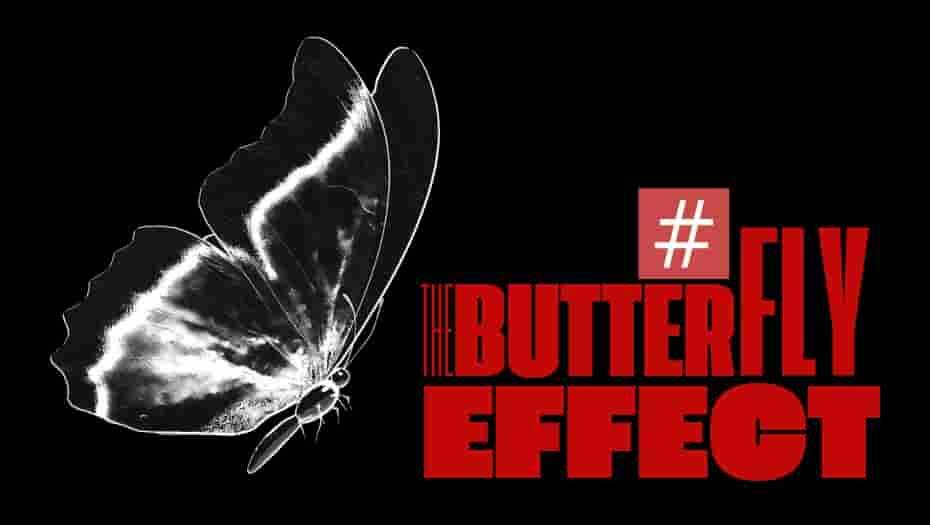The Butterfly Effect Explained: Impact & Real World Examples

The Butterfly Effect is a concept from chaos theory that illustrates how small, seemingly insignificant actions can lead to significant and unforeseen consequences over time. The term was popularized by meteorologist Edward Lorenz, who suggested that the flap of a butterfly's wings in Brazil could set off a tornado in Texas.
Introduction — Why the Butterfly Effect Captures Our Imagination
Have you ever wondered how a tiny action—something as small as saying hello to a stranger, missing a bus, or even pressing the snooze button—could set your life on a completely different path?
This idea isn’t just philosophy. It’s science, and it has a name: The Butterfly Effect.
From weather systems to world wars, from financial crashes to personal choices, the Butterfly Effect explains how small causes can have massive, unpredictable outcomes. It’s one of those concepts that blurs the line between science, history, and the mysteries of life.
And it all started in a lab in the 1960s, with a computer that made a tiny rounding error…
What Is the Butterfly Effect?
The Butterfly Effect describes how small, seemingly insignificant changes in a system can lead to huge, unpredictable outcomes later on.
Unlike simple cause-and-effect (press a button, light turns on), the Butterfly Effect works inside chaotic systems—complex environments where prediction becomes impossible beyond a certain point.
Think of weather forecasting. Scientists can tell you if it’ll rain tomorrow. But ask for a forecast three weeks ahead, and the answer will be fuzzy at best. That’s the Butterfly Effect at play.
Definition (Simple):
A tiny change in initial conditions can completely alter the outcome in a chaotic system.
Example: A butterfly flaps its wings in Brazil… and weeks later, a tornado forms in Texas.
It sounds poetic, almost mythical. But it’s grounded in mathematics and science.
(Suggested visual here: diagram showing butterfly wing flap → atmospheric ripple → tornado)
The Origin of the Butterfly Effect
Edward Lorenz’s Discovery (1961)
In the early 1960s, Edward Lorenz, a meteorologist at MIT, was running weather simulations on a Royal McBee computer (the size of a desk, slower than today’s smartphones).
One day, he re-ran a simulation using rounded numbers: instead of entering 0.506127, he typed 0.506. A difference of less than 0.000127.
What happened shocked him.
The weather pattern that emerged was completely different from the original.
This tiny decimal change had caused the whole system to diverge.
Lorenz realized: long-term weather forecasting might be impossible—not because we lack data, but because the system itself is chaotic.
In 1972, he presented a lecture with the now-famous title:
“Does the Flap of a Butterfly’s Wings in Brazil Set Off a Tornado in Texas?”
The metaphor stuck. The Butterfly Effect was born.
Scientific Validation & Theories
Lorenz’s work didn’t sit in isolation. Other scientists helped cement the idea:
-
James Yorke (1975): Coined the term “Chaos Theory”, formally studying how unpredictable systems behave.
-
Benoit Mandelbrot: Developed fractal geometry, showing that infinite complexity can emerge from simple rules (think snowflakes, coastlines, stock market charts).
-
Modern Meteorology: Even with today’s supercomputers, forecasts beyond 10–15 days remain unreliable, thanks to chaos.
And then there’s the most iconic visualization of all:
-
The Lorenz Attractor: a 3D mathematical model that looks like a butterfly’s wings. It shows how small changes push the system into entirely different paths—forever unpredictable.
(Suggested visual: Lorenz Attractor image — the butterfly-shaped graph)
Real-Life Case Studies of the Butterfly Effect
The Butterfly Effect isn’t just about math or weather. History, finance, technology, and even pop culture are full of examples.
History & Politics
-
World War I:
A single assassination—Archduke Franz Ferdinand in 1914—triggered alliances, escalations, and ultimately a global war that reshaped the 20th century. -
Cold War Close Call (1983):
A Soviet radar operator misinterpreted U.S. signals as incoming missiles. Instead of reporting it up the chain, he hesitated. That hesitation—a human “small action”—likely prevented nuclear war.
Economics & Finance
-
2008 Financial Crisis:
Minor mortgage defaults in the U.S. spiraled into a chain reaction, collapsing banks worldwide, wiping trillions from global markets. -
The “Fat Finger” Error:
One trader accidentally added an extra zero to a stock order—erasing billions in market value within minutes.
Finance is full of butterfly wings—tiny fluctuations that trigger global storms.
Technology & Innovation
-
Steve Jobs’ Calligraphy Class:
After dropping out of college, Jobs wandered into a calligraphy class. That random choice inspired Macintosh fonts, which influenced all modern digital typography. -
Tim Berners-Lee at CERN:
His “small project” to improve communication among physicists became the World Wide Web—changing human history forever.
Pop Culture
-
Ray Bradbury’s “A Sound of Thunder” (1952):
A time traveler steps on a butterfly in prehistoric times… and returns to a future that is unrecognizable. -
Movies & Series:
-
The Butterfly Effect (2004) explores how small choices change entire timelines.
-
Dark (Netflix) builds its plot on chaos, time loops, and small changes.
-
Mr. Nobody (2009) dramatizes how one childhood decision branches into infinite possible lives.
-
Butterfly Effect vs Similar Concepts
People often confuse the Butterfly Effect with the Ripple Effect or Domino Effect. Let’s clarify.
| Effect | Definition | Example | Key Difference |
|---|---|---|---|
| Butterfly Effect | Tiny cause in a chaotic system → massive unpredictable result | A butterfly wing flap alters weather | Chaos, non-linear, unpredictable |
| Ripple Effect | One action spreads outward in waves | Sharing knowledge inspires many | Predictable spread |
| Domino Effect | One event directly causes a chain reaction | One domino falls, knocking the rest | Linear and predictable |
In short:
-
Butterfly = chaos, randomness.
-
Ripple = spread, influence.
-
Domino = chain, sequence.
(Suggested visual: Three side-by-side diagrams of butterfly, ripple, and domino chains)
Applications of the Butterfly Effect Today
In Science
-
Climate Modeling: Why accurate long-term weather/climate predictions are nearly impossible.
-
Pandemic Spread: One undetected infection can become a global crisis.
-
Space Exploration: A miscalculated decimal in navigation can send a spacecraft millions of miles off course.
In Business
-
Startups: A tiny pivot or early customer feedback can transform a small company into a unicorn.
-
Viral Marketing: One meme, one TikTok, one perfectly timed Instagram post can explode into global recognition.
-
SEO & Digital Marketing: A single optimized keyword or backlink can skyrocket search rankings.
(Internal link suggestion: Trendzza’s guides on SEO & digital marketing)
In Personal Life
-
Micro-Habits: Drinking water daily, walking 10 minutes—small actions that reshape health long-term.
-
Chance Encounters: Meeting one person at the right time can alter careers, relationships, entire lives.
-
Decisions: Choosing a subject in college, taking a job offer, or even missing a bus can redirect your entire path.
FAQs about the Butterfly Effect
Q1. Who discovered the Butterfly Effect?
Edward Lorenz, in the 1960s, while studying weather systems.
Q2. Is the Butterfly Effect real?
Yes. Proven through chaos theory, meteorology, physics, and complex systems research.
Q3. What’s a real-life example of the Butterfly Effect?
The 2008 financial crisis, World War I’s chain reaction, or meeting someone by chance who changes your life.
Q4. What is the Lorenz Attractor?
A 3D mathematical figure that resembles a butterfly, showing how small changes lead to chaotic outcomes.
Q5. How is the Butterfly Effect different from the Ripple Effect?
Ripple Effect is predictable spread; Butterfly Effect is chaotic unpredictability.
Q6. Can small habits really change your life?
Yes. Micro-habits compound over years, creating massive long-term differences.
Q7. Does the Butterfly Effect apply in psychology?
Yes. Small shifts in mindset, therapy breakthroughs, or even one supportive conversation can reshape a person’s mental health path.
Q8. Is the Butterfly Effect used in movies?
Absolutely—The Butterfly Effect, Dark, Mr. Nobody, and more.
Q9. Why can’t we predict weather beyond 15 days?
Because chaotic systems like weather are sensitive to tiny variations in data, making long-term forecasts unstable.
Q10. Does the Butterfly Effect mean everything is random?
Not random—chaotic. Patterns exist, but exact outcomes can’t be predicted.
Conclusion — Why Small Choices Matter
The Butterfly Effect teaches us something profound: in a chaotic world, even the smallest decisions matter.
From Lorenz’s weather models to wars, financial markets, innovations, and our daily lives, history is shaped not by grand plans alone—but by countless tiny moments that spiral into the future.
So the next time you make a small choice—whether it’s clicking publish on a blog, saying yes to an invitation, or investing 10 minutes in learning—you might just be setting off your own butterfly wings.
👉 At Trendzza, we believe that in marketing, business, and life, small, smart actions compound into big, life-changing results. Ready to create your own butterfly effect? Explore our digital growth guides.
Write your opinions below: :)







